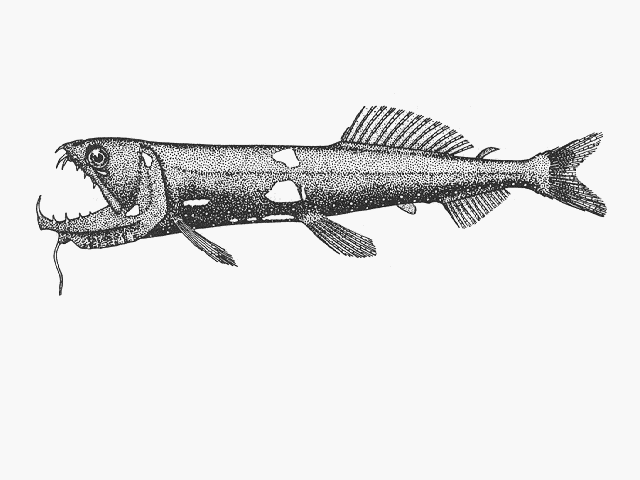| Stomiidae (Barbeled dragonfishes), subfamily: Astronesthinae |
| 21 cm SL (male/unsexed) |
|
bathypelagic; marine; depth range 1 - 3000 m |
| Eastern Atlantic: Madeira (Ref. 2802) to off South Africa (Ref. 4465). Western Atlantic: 25°N-5°N. Indo-Pacific: eastern Africa, Gulf of Aden and Bay of Bengal to the vicinity of the Hawaiian and Japanese islands, the Philippines and northwestern Australia. Eastern Pacific: most frequent in the equatorial zone covering the Galapagos. This species is not likely to occur in the central oceanic gyres (Ref. 27676). South China Sea (Ref.74511). |
|
Dorsal spines (total): 0-0; Dorsal soft rays (total): 15-16; Anal spines: 0-0; Anal soft rays: 14-14; Vertebrae: 43-46. Body black in color (Ref. 3982). Relatively large luminous patches on operculum and interoperculum, and along ventral margin of lower jaw; its color pink when fresh, whitish preserved (Ref. 559). Serial photopores few and widely spaced (Ref. 559). Body moderately elongate and slender. Chin barbel long and slender, tip expanded in form of thin flaps or swollen bulb. Maxillary teeth are comblike (Ref. 37039). |
| An oceanic and mesopelagic species usually found deeper than 500 m during the day (Ref. 2802). Feeds on midwater fishes and crustaceans (Ref. 2802). Also Ref. 58302. |
|
Least Concern (LC); Date assessed: 19 May 2013 Ref. (130435)
|
| harmless |
|
Source and more info: www.fishbase.org. For personal, classroom, and other internal use only. Not for publication.

